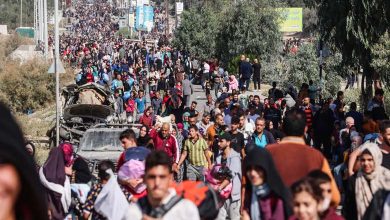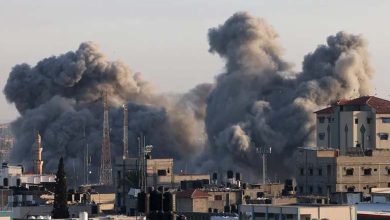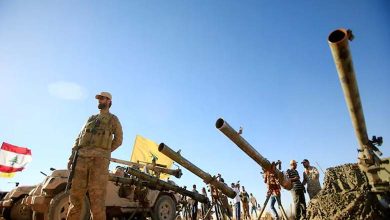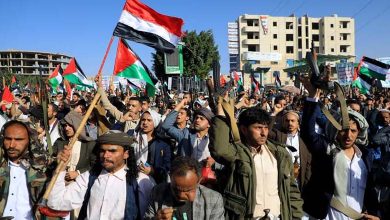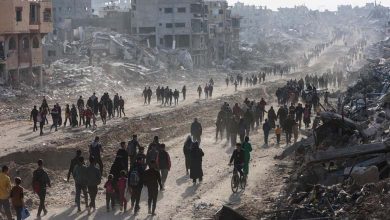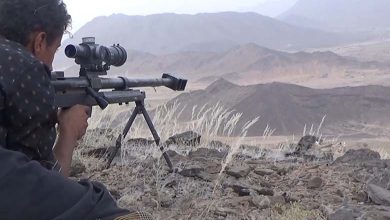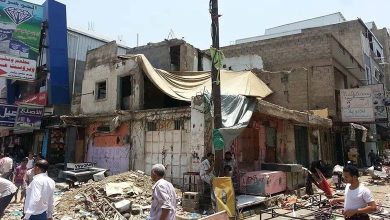A new Israeli road divides Gaza… A new stage of war or occupation on the horizon?
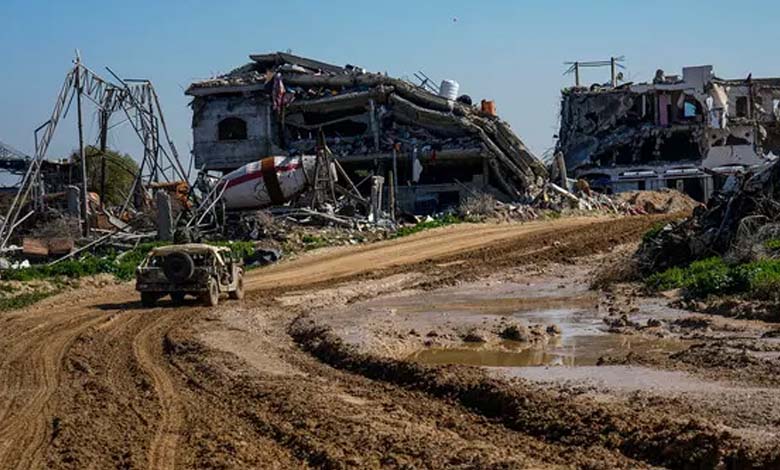
Israeli movements on the ground in the Gaza Strip indicate a new phase of the ongoing war for the fifth consecutive month.
The American newspaper “The Wall Street Journal” reported that the Israeli army is expanding a road through the center of Gaza to facilitate its military operations, as part of its plans to maintain security control over the territory for some time, according to defense officials.
The purpose of the road
The gravel-paved road is part of a series of Israeli movements including:
- Reshaping the terrain of the Gaza Strip
- Granting the Israeli army freedom of movement
- Tightening control over the area that was the starting point of the attack on October 7th, which killed about 1200 people.
-
After the Israeli Army Raid… What is the Fate of Those Detained in Al-Shifa Hospital?
The location
The passage, located south of the city of Gaza and stretching about 5 miles from the Israeli border to the coast, divides Gaza into two parts, along an east-west strip controlled by Israeli forces since the beginning of the war.
This will allow the Israeli army to continue moving quickly through the pocket along a secure road, even after the withdrawal of most troops.
The Israeli army already controls the main roads between the north and south of Gaza.
The road is part of an emerging picture of how the Israeli army is preparing for the next phase of the war, as it plans to withdraw from populated areas and focus on targeted strikes against Hamas.
Risks of the road to the lives of Gaza residents?
- The renovated road could effectively create a military belt across Gaza
- It could prevent about a million displaced people from Gaza from returning to the south during Israeli airstrikes, until the completion of military operations in the north and reaching an agreement to release about 130 hostages.
- A military official said Israeli forces would guard the road to prevent armed attacks, according to the “Wall Street Journal”.
-
Egypt rejects Israeli accusations before the international court of justice of blocking aid to Gaza
- Meri Aisen, a retired colonel from the Israeli army, spoke about the duration during which Israel plans to use the east-west passage, saying, “I can call it temporary in the long term, and certainly for the whole year 2024.”
- Israeli engineers plan to demolish homes and other buildings along the sides of the road, and they have already laid a new gravel base to widen the passage and make it more useful to the army, according to footage aired by Israeli Channel 14 last Saturday.
-
Doha negotiates with Hamas to bring in medicines for Israeli hostages
The timing
The construction and widening of the road come as the Israeli army is also building a buffer zone about a kilometer inside Gaza’s borders with Israel, where Palestinians are barred from entering.
US officials have repeatedly warned Israel against changing Gaza’s borders or dividing its lands.
US officials have publicly opposed the creation of a buffer zone.
The road is expected to be used for east-west patrols until the end of Israeli military operations in Gaza, which could last for months or even years, according to Israeli officials.
According to these officials, Israel has no intention of permanently occupying Gaza, but it plans to maintain “security”.
After the October 7th attack, Israel pledged to eliminate the Hamas threat in Gaza, launching a war that is still ongoing today for 139 days, killing nearly 30,000 Palestinians and displacing nearly two million people from their destroyed homes.
Satellite images
Satellite images captured in February and presented by Maxar Technologies, a Colorado-based satellite company, to the “Wall Street Journal,” show what appears to be a winding dirt road dividing Gaza through farmland and sparsely populated areas.
The images show it to be parallel to an existing east-west road, slightly to the north.
Jacob Nagel, former Israeli national security adviser, said the road would create a clear gap between northern Gaza and the rest of the strip.
He noted that it is unlikely that a wall would be built next to the road, but added that there could be different crossing points between north and south that would be guarded.


